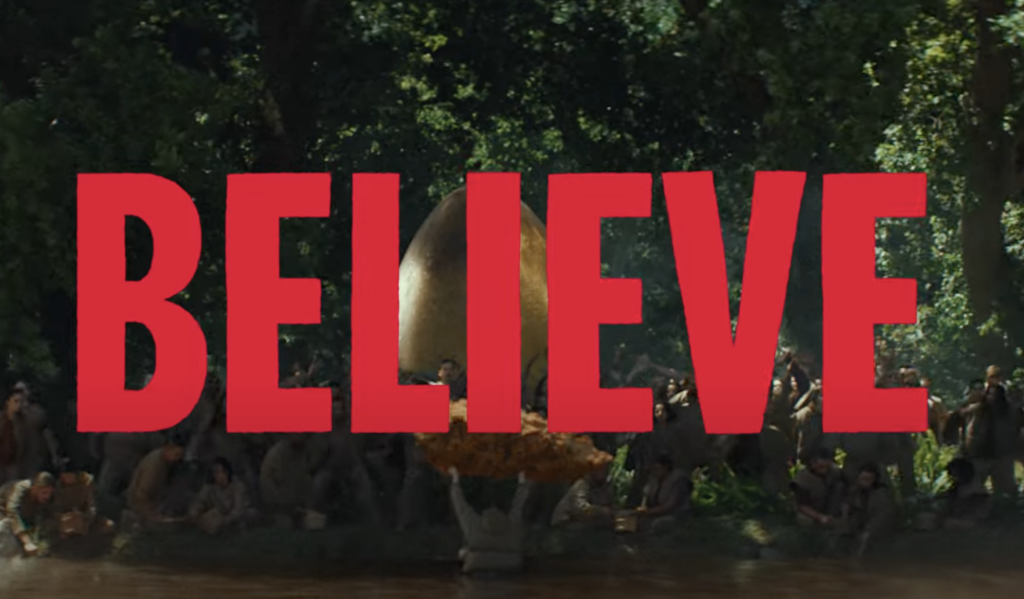
Last week, I analyzed a fantastic promotional video from Apple through the lens of Audacious, a book that describes a framework for disruptive and bold marketing. After reading that post, fellow marketer Mandy Edwards sent me another new video — this one from KFC UK — and asked, “What do you think of this one?”
Today, I present a story of audacity that went horribly, horribly wrong! Let’s see what happened when a company tried to create a chicken-based cult …
Why we need to disrupt our marketing
Before I get to this ad fail, let’s back up one step and discern why companies need to focus on bold marketing today. Some of the main points in the book:
- About two-thirds of ads register no emotional reaction with their audience. If there were a CMO for the ad industry, the person would be fired. We wallow in a marketing pandemic of dull.
- Dull has been normalized in most industries. So if you break a norm, you just might find marketing gold.
- Consumers respond to storytelling that is refreshing and new. Young consumers today love quirky content and offbeat humor.
- Finally, if all you need is marketing “meh,” AI can accomplish that. If you’re only competent, you’re vulnerable to job replacement. Competent is ignorable.
The Audacious book presents a framework anyone can use to do this: disrupt the narrative, the medium, and the storyteller.
Now, let’s get to the heart of our story. KFC created a video that certainly broke industry norms. In this ad, UK agency Mother London urges customers in a busy world to believe in chicken as if it were a new gravy-based religion.
Take a look:
You’ll note that this is “Part 2.” Part 1 involved zombie dancers, who received more favorable reviews.
Audacity and gravy
How did KFC shake things up? Three ways:
- Obviously, this ad broke industry norms. Perhaps there has never been a promotional video like this in the history of fast food … at least not one featuring a lake of gravy!
- The company was appealing to GenZ’s penchant for quirky humor.
- There is a subtle connection to “purpose” here. If you feel lost, you can still believe in chicken. Everything in the world is changing, but KFC has always been there for us.
There are precedents for this offbeat, bold marketing approach that have been wildly successful.
- Liquid Death disrupted a boring water market with cringe-worthy ads
- Nutter Butter tripled its cookie sales with fever dream TikTok videos
- Duolingo stood out in an established, dull market of language education with an unfiltered owl.
So if KFC was following the Audacious playbook like these brands, why would it receive YouTube comments like:
- “I cannot possibly imagine how any person thought this was a good idea.”
- “I’ll never eat at KFC ever again, nor will anyone in my household.”
- “They should fire their entire marketing team.”
This video is an unmitigated disaster. They took a big swing and struck out. Here are three reasons why.
1. Too much to lose
There is a common thread among the three successful case studies I mentioned: They had nothing to lose.
- Liquid Death was a disruptive startup going up against Coke and Pepsi.
- Likewise, Duolingo was a new way to learn that had to attack the industry establishment.
- Nutter Butter is an older brand but had no real meaning to consumers. It had been forgotten, so it had nothing to lose by re-introducing itself to Gen Z.
Should an established brand like Coke advertise like Liquid Death? No. Coke has built a century of goodwill in the consumer’s mind.
Would Oreo ever take a page from the bizarre Nutter Butter playbook? No. Oreo is the number one brand in its category.
KFC is the biggest chicken franchise on earth, by far. It has built decades of memories and thrown them away into a lake full of gravy. Instead of building on its heritage creatively and renewing its deep meaning with a new generation, it’s taking a step backward.
“We are being polarizing because we want conversation,” said Martin Rose, executive creative director of Mother London told Ad Age. “Essentially, we’re creating our own cult of fandom.”
But this seems to me like a desperate attempt to be the new cool kid. And besides …
2. Some taboos can’t be broken
My book is a rallying cry for those who will not be ignored. It urges people to break bad rules for good reasons. But I also caution that being audacious does NOT mean you’re doing something illegal, reckless, or offensive.
The Advertising Standards Authority (ASA), the U.K.’s independent advertising regulator, received nearly 600 complaints about KFC’s commercial, a spokesperson told ADWEEK.
The complaints include people saying the ad promotes cannibalism, that it glorifies cults and satanism, and that it mocks Christianity and baptism.
Now, a lot of famous ads receive complaints from the easily-offended. Is this really knocking religion or is it just silly?
Language in the company’s description of the ad reinforces the offense:
“Fear not, for salvation in sauce is near. Trust in the thumping sound of the golden egg. Trust in the liquid gold elixir. Trust in the divine dunk. And whisper the sacred words All Hail Gravy.”
The phrase repeated in the Bible most often is “Fear not.” So of course any Christian would be offended when a company compares their salvation to gravy.
And then there is the gravy dunk, where a person turns into fried chicken. No, no, no. Also, no.
3. It’s just gross
The ad didn’t just offend people who don’t prefer cannabilism; it upset just about everyone in the ad industry.
One commentator on Marketing Beat called the ad “disgraceful,” describing it as “degrading and disturbing.” Others labeled it “vile,” “uncomfortable,” and “horrendous.”
One marketing industry observer noted: “I’ve never complained about an advert before, but this is beyond the pale.”
Getting out of the gravy
I don’t want you to be dissuaded from bold marketing and taking risks because of one bad ad. But we should reflect on how something like this ever sees the light of day. When an ad becomes a public disaster, one of four things has happened:
1. Internal political fear.
This is the biggest problem I observe, by far. When a powerful company executive falls in love with an idea and forcefully champions it, agencies, hungry for that next paycheck, nod along like bobbleheads. Corporate minions, fearing for their cubicles, become a chorus of yes-people.
2. Lack of diversity in the creative process.
If the team behind an ad campaign lacks diverse perspectives and backgrounds, they may miss potential blind spots or fail to anticipate how certain groups could perceive the ad negatively. Having a homogenous team increases the risk of tone-deaf messaging.
3. Overconfidence and lack of external review.
Respected brands can sometimes become overconfident in their marketing abilities and fail to get sufficient external feedback before launching a campaign. Big brands often mistake their logo for a shield of invincibility. This insular approach prevents them from catching potentially offensive or controversial elements.
4. Failure to consider the current cultural context.
Ads that may have been acceptable in the past can become problematic if they fail to account for evolving cultural sensitivities and the social climate around issues like race, gender, body image, etc.
In other words, when executives put egos above common sense, gravy happens.
Being remarkable matters. Bold marketing matters.
But not all risks are created equal.
Keep pushing edges, but remember what you stand for.
 Need a keynote speaker? Mark Schaefer is the most trusted voice in marketing. Your conference guests will buzz about his insights long after your event! Mark is the author of some of the world’s bestselling marketing books, a college educator, and an advisor to many of the world’s largest brands. Contact Mark to have him bring a fun, meaningful, and memorable presentation to your company event or conference.
Need a keynote speaker? Mark Schaefer is the most trusted voice in marketing. Your conference guests will buzz about his insights long after your event! Mark is the author of some of the world’s bestselling marketing books, a college educator, and an advisor to many of the world’s largest brands. Contact Mark to have him bring a fun, meaningful, and memorable presentation to your company event or conference.


